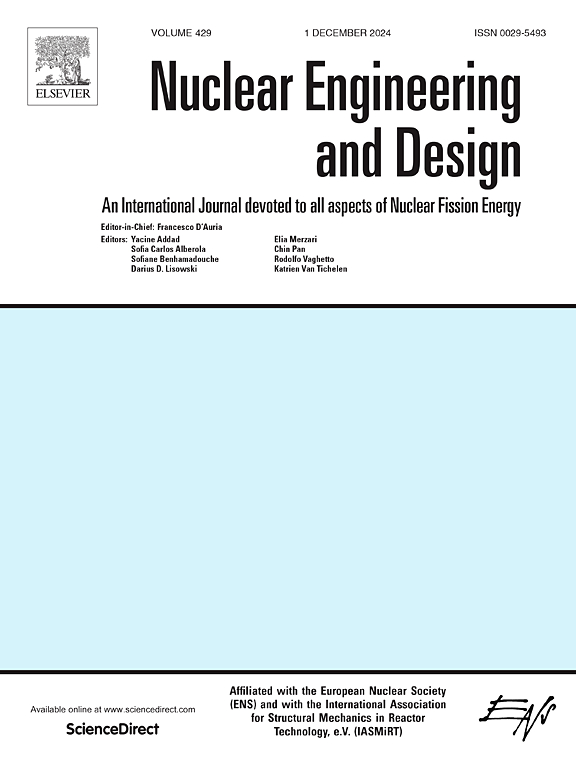Finite element formulations of the semi-analytical time-domain model for flow-induced vibration of tube bundles in steam generators
IF 1.9
3区 工程技术
Q1 NUCLEAR SCIENCE & TECHNOLOGY
引用次数: 0
Abstract
This paper describes the finite element method (FEM) formulations for flow-induced vibration of steam generator tube bundles, based on a semi-analytical time domain (SATD) model proposed by us recently (Sun et al., Appl. Math. Modell. 132, 2024, 252-273). The SATD model is featured by explicit fluid force expressions in terms of multiple integrals with time delays. The new SATD model allows for a unified treatment of both time domain and frequency domain fluidelastic instability (FEI) analysis of a tube due subjected to crossflow. Specifically, this study adds to the body of knowledge through two contributions: (1) This paper presents the details of FEM formulations on this newly formulated SATD theory, in particular the discretization of fluid forces in both lift and drag directions, which are crucial for FEM implementation but missing in the literature; (2) This study presents the formulations based on FEM discretization for frequency domain FEI analysis of tubes, and provides very the first reference on FEI stability analysis of U-tubes. Our FEM results agree well with reported experimental data and numerical results. The numerical examples presented here, including single-span straight tubes subjected to uniform flow and multi-span U-tubes subjected to nonuniform flow, not only demonstrate the merit of the theory for academic research, but also exhibit the potential of the FEM code for realistic engineering applications. Our efforts provide useful and powerful numerical tools for flow-induced vibration analysis of tube bundles in steam generators and other heat exchangers.
求助全文
约1分钟内获得全文
求助全文
来源期刊

Nuclear Engineering and Design
工程技术-核科学技术
CiteScore
3.40
自引率
11.80%
发文量
377
审稿时长
5 months
期刊介绍:
Nuclear Engineering and Design covers the wide range of disciplines involved in the engineering, design, safety and construction of nuclear fission reactors. The Editors welcome papers both on applied and innovative aspects and developments in nuclear science and technology.
Fundamentals of Reactor Design include:
• Thermal-Hydraulics and Core Physics
• Safety Analysis, Risk Assessment (PSA)
• Structural and Mechanical Engineering
• Materials Science
• Fuel Behavior and Design
• Structural Plant Design
• Engineering of Reactor Components
• Experiments
Aspects beyond fundamentals of Reactor Design covered:
• Accident Mitigation Measures
• Reactor Control Systems
• Licensing Issues
• Safeguard Engineering
• Economy of Plants
• Reprocessing / Waste Disposal
• Applications of Nuclear Energy
• Maintenance
• Decommissioning
Papers on new reactor ideas and developments (Generation IV reactors) such as inherently safe modular HTRs, High Performance LWRs/HWRs and LMFBs/GFR will be considered; Actinide Burners, Accelerator Driven Systems, Energy Amplifiers and other special designs of power and research reactors and their applications are also encouraged.
 求助内容:
求助内容: 应助结果提醒方式:
应助结果提醒方式:


